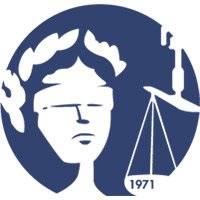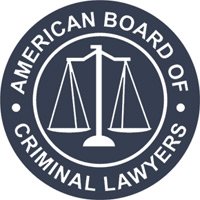TAINTED EVIDENCE
FRUIT OF THE POISONOUS TREE
If it is established that the search or seizure was illegal, then not only is any evidence obtained thereby inadmissible, but any evidence discovered as the result or exploitation of that primary illegality is as well inadmissible as “fruit of the poisonous tree”. Wong Sun v. U.S., 371 U.S. 471, 83 S.Ct. 407, 9 L.Ed.2d 441 (1963).
“[W]hether, granting establishment of the primary illegality, the evidence to which instant objection is made has been come at by exploitation of the illegality or instead by means sufficiently distinguishable to be purged of the primary taint.” Wong Sun v. U.S., 371 U.S. at 487-488.
This is true regardless of what type of evidence has been obtained from the illegal search. Witness testimony that is the product of such a search is subject to the exclusionary rule’s suppression penalty. The prosecution bears the burden of showing that the testimony falls within an exception to the exclusionary rule. See U.S. v. Houltin, 566 F.2d 1027 (5th Cir. 1978). U.S. v. Ramirez-Sandoval, 872 F.2d 1392 (9th Cir. 1989) [verbal evidence of alien smuggling obtained by police after illegal search of a van is tainted “fruit”].
Thus, not only is evidence obtained by the “primary illegality” inadmissible, but also any derivative evidence obtained “by exploitation of that illegality” will be proscribed:
“If one such product of illegal detention is proscribed, by the same token all should be proscribed.” Davis v. Mississippi, 394 U.S. 721, 724, 189 S.Ct. 1394; 22 L.Ed.2d 676, 679 (1969). See also Hayes v. Florida, 470 U.S. 811, 105 S.Ct. 1643, 84 L.Ed.2d 705 (1985) [ removal and transportation of a suspect to the police station for fingerprinting requires probable cause and a warrant, no matter how brief the station house interrogation]; Silverthorne Lumber Company v. U.S., 251 U.S. 385, 40 S.Ct. 182, 64 L.Ed.2d 319 (1920); Fletcher v. Wainwright, 399 F.2d 62 (5th Cir. 1968); U.S. v. Ruffin, 389 F.2d 76, 79 (7th Cir. 1968).
“[A]n otherwise legal search or arrest cannot stand if probable cause for it was established only by a prior illegal search. U.S. v. McKim, 509 F.2d 769, 775 (5th Cir. 1975). But see U.S. v. Lynch, 716 F. Supp. 96 (S.D. N.Y. 1989) [illegally obtained evidence may be utilized to prove “other crimes” evidence].
TANGIBLE EVIDENCE
See Davis v. Mississippi, 394 U.S. 721, 89 S.Ct. 1394, 22 L.Ed.2d 676 (1969) [fingerprints]; U.S. v. Harris, 453 F.2d 1317 (8th Cir. 1972) [handwriting exemplars]; U.S. v. Kennan, 496 F.2d 181 (1st Cir. 1974) [ hands examined under ultraviolet light]; U.S. v. Bridges, 499 F.2d 179, cert. denied, 419 U.S. 1010 (1974) [hands swabbed with chemicals designed to reveal traces of explosives].
INEVITABLE DISCOVERY DOCTRINE
The Supreme Court adopted the so-called “inevitable or ultimate discovery” doctrine, holding that a victim’s body, located as the result of interrogation conducted in violation of an accused Sixth Amendment right to Counsel, would have been inevitably discovered by the search already in progress. See Nix v. Williams, 467 U.S. 431, 104 S.Ct. 2501, 81 L.Ed.2d 377 (1984); U.S. v. Martinez-Gallegos, 807 F.2d 868, 870 (9th Cir. 1987)
[INS agents would have consulted defendant’s immigration file absent un-warned incriminating statements]; U.S.
- Kroesser, 731 F.2d 1509 (11th Cir. 1984) [a reasonable probability of inevitable discovery removes taint of fruit of unconstitutional interrogation].
The prosecution must meet a two part test in the Fifth Circuit before evidence discovered by police misconduct will be admissible. First, there must be a reasonable probability that the evidence would have been discovered by lawful means in the absence of police misconduct and second the prosecution must have been actively pursuing a substantial alternate line of investigations at the time of the constitutional violation.” U.S. v. Cherry, 759 F.2d 1196 (5th Cir. 1985).
The prosecution has the burden of demonstrating same by a “preponderance of evidence”, but need not negate “bad faith”. Nix v. Williams, 467 U.S. 431, 104 S.Ct. 2501, 81 L.Ed.2d 377 (1984).
The “inevitable discovery” exception (ultimate discovery doctrine) to the “exclusionary rule” has been applied to permit introduction into evidence of a victim’s body, even though the accused’s post arrest statement leading police to that scene was obtained in violation of defendant’s Sixth Amendment right to counsel. Wicker
- State, 667 S.W.2d 137 (Tex.Crim.App. 1984) (en banc); …and has permitted evidence from a search conducted pursuant to invalid consent since probable cause to search the home existed and an officer had already gone to prepare an affidavit for a search warrant. U.S. v. Lamas, 930 F.2d 1099 (5th Cir., 1991).
INDEPENDENT SOURCE DOCTRINE
Justice Scalia writing the majority (4-3) opinion in Murray v. U.S., 487 U.S. 533 (1988), found that the independent source doctrine was closely akin to the inevitable source doctrine, both exceptions to the exclusionary rule. Employing the fiction that although a valid discovery never really takes place, it is accepted as inevitable Scalia dismisses the possibility the doctrine would encourage police to make an invalid search to see if it is worth their while to procure a warrant. Scalia explains, in a footnote, that the prosecutor does not need to prove that a warrant would have even been sought regardless of the illegal entry. Murray v. U.S., supra. Segura v. U.S., 468 U.S. 796, 104 S.Ct. 3380, 82 L.Ed.2d 599 (1984)[independent source applicable where search warrant obtained after 19 hours elapsed from the warrantless entry of apartment, arrest of defendant, and seizure of drug paraphinalia in plain view]. However, the lawful process by which the evidence would have been inevitably discovered must have already been initiated at the time the evidence was illegally obtained. U.S. v. Satterfield, 743 F.2d 827, 846-47 (11th Cir. 1984) [officers “obtained a valid warrant for the search of (the accused’s) residence several hours after the illegal search was made” could not qualify under the “inevitable discovery” doctrine, noting that “the illegality can be cured only if the police possessed and were pursuing a lawful means of discovery at the time the illegality occurred”].
“To qualify for admissibility, there must be a reasonable probability that the evidence in question would have been discovered by lawful means, and the prosecution must demonstrate that the lawful means which made discovery inevitable were possessed by the police and were being actively pursued prior to the occurrence of the illegal conduct…. Here the Government had not yet initiated the lawful means that would have led to the discovery of the evidence…. [a]t the time the government violated Satterfield’s fourth amendment right, it did not possess the legal means that would have led to the discovery of the shotgun. That means did not exist until several hours later when the warrant was obtained.” U.S. v. Satterfield, 743 F.2d at 846-47.
U.S. v. Cherry, 759 F.2d 1196, 1205, n. 10 (5th Cir. 1985) [in order to rely upon the inevitable discovery exception to the warrant requirement “the alternate means of obtaining the evidence must at least be in existence and, at least to some degree, imminent, if yet unrealized”]; U.S. v. Amuny, 767 F.2d 1113, 1129 n.10 (5th Cir. 1985) [prosecution has burden].
“The prosecution must demonstrate both a reasonable probability that the evidence would have been discovered in the absence of police misconduct and that the government was actively pursuing a substantial alternative line of investigation at the time of the constitutional violation. The government has offered no theory suggesting how the agents would have discovered the contraband absent the agents’ misconduct. They have failed to sustain their burden of proof that the doctrine applied.” U.S. v. Amuny, 767 F.2d at 1129 n.10. U.S. v. Brookins, 614 F.2d 1037 (5th Cir. 1980); U.S. v. Andrade, 784 F.2d 1431 (9th Cir. 1986)[one hour after defendant is arrested, police searched his garment bag and discovered cocaine. Court upholds search under inevitable discovery doctrine since the cocaine would have been lawfully discovered during the inventory search when defendant was booked]; U.S. v. Silvestri, 787 F.2d 736 (1st Cir. 1986) [requirement that warrant application process have already begun at the time of the illegal search search warrant for garage would have inevitably been sought and issued even if illegal search had never taken place]; U.S. v. Whitehorn,, 813 F.2d 646 (4th Cir. 1987) [evidence first seen during illegal search and later seized during second search pursuant to warrant held admissible under “inevitable discovery” doctrine]; But see United States v. Watkins, F.4th ,
2021WL3700295 at *2 (11th Cir. 2021) (Government must prove by a preponderance of the evidence that the evidence would have been discovered by some lawful means.) (citing Nix v. Williams, 104 S. Ct. 2501 (1984)).
It is not required that there be two distinct searches in order for the independent source doctrine to apply.
U.S. v. Forbes, 528 F.3d 1273 (10th Cir. 2008).
GOVERNMENT HAS BURDEN OF PROOF TO SHOW “INDEPENDENT SOURCE” OF DISCOVERY OF OTHERWISE TAINTED EVIDENCE
Once the illegality of the initial search or arrest has been established, and a showing made that other evidence has been arrived at as the result or exploitation of that primary illegality, then the burden shifts to the Government to prove that such evidence had an independent source which is sufficiently distinguishable to purge such evidence of the primary taint. Harrison v. U.S., 392 U.S. 219, 255 n.12, 88 S.CT. 2008, 20 L.Ed.2d 1047 (1968).
DISSIPATION OF “TAINT”
Evidence which is discovered as the result of an illegal search or arrest is regarded as fruit of that illegal activity unless knowledge of it “is gained from an independent source” such as to “dissipate that primary taint” Silverthorne Lumber Co. v. U.S., 251 U.S. 385, 392, 40 S.Ct. 182, 64 L.Ed.2d 319 (1920).
Nardone v. U.S., 308 U.S. 338, 341, 60 S.Ct. 266, 84 L.Ed.2d 307 (1939); Costello v. U.S., 365 U.S. 265, 290, 81 S.Ct. 534, 5 L.Ed.2d 551 (1961).
NO “INEVITABLE DISCOVERY” OR “INDEPENDENT SOURCE” EXCEPTION UNDER TEXAS STATUTE
The express provisions of TEX. R. CRIM. P. Art. 38.23, Texas’ statutory exclusionary rule, cannot support application of either the “inevitable discovery” or “independent source” exceptions to the federal exclusionary rule.
“The article contains no exceptions to the rule. If there should be exception to the rule, similar to the exceptions which have been recently made to the exclusionary rule, such a change should come by way of amendment to art. 38.23, not by our ruling that the evidence is admissible in direct contradiction to the plain wording of the statute.” Oliver v. State, 711 S.W.2d 442, 445 (Tex.App.-Ft. Worth 1986).
IDENTIFICATION
The mere fact that an accused’s presence at his prosecution is the result of an illegal arrest does not require the suppression of that in-court identification as fruit of the illegal arrest, at least not where the accused’s identity had been known to police as well as a suspicion of his relation to the criminal activity prior to his arrest. U.S. v. Crews, 445 U.S. 463, 100 S.Ct. 1244, 63 L.Ed.2d 537 (1980).
ILLEGAL FRUITS AS PROBABLE CAUSE
Where probable cause for a search or arrest is established by a prior illegal search or arrest, then same will be tainted thereby and the fruits thereof suppressed. 3 WRIGHT, FEDERAL PRACTICE AND PROCEDURE: CRIMINAL 677; Hayes v. Florida, 470 U.S. 811, 105 S.Ct 1643, 84 L.Ed.2d 705 (1985); Hair v. U.S., 289 F.2d
894 (D.C. Cir. 1961); U.S. v. Paroutian, 299 F.2d 486 (2d Cir. 1962); U.S. v. Ramirez-Sandoval, 872 F.2d 1392 (9th Cir. 1989) [suppressing verbal evidence obtained by police during an illegal search]; U.S. v. Gonzalez, 728
- Supp. 185 (S.D.N.Y. 1989) [suppressing illegal search based on drug profile as post-arrest statements as fruit of the poisonous tree].
Nor can probable cause for a search be established by a statute obtained in violation of Miranda. U.S. v. Morales, 788 F.2d 883, 886 (2d Cir. 1986). Neither can a search be justified by what it produces. Byars v. U.S., 273 U.S. 28, 29, 47 S.Ct. 248, 71 L.Ed.2d 520 (1927).
The existence of a warrant for a person’s arrest does not validate the unreasonable seizure when a police officer stops and obtains identification from a suspect without reasonable suspicion for the stop. United States v. Gross, 662 F.3d 393 (6th Cir. 2011)











